Assessment of Long-Term Spatio-Temporal Rainfall Variability over Ghana using Wavelet Analysis
Abstract
:1. Introduction
2. Study Area and Data Source
2.1. Study Area
2.2. Data Source
3. Methodology
3.1. The Wavelet Transform
3.1.1. Choice of Scales
3.1.2. Cone of Influence
3.1.3. The Background Spectrum and Significant Levels
3.1.4. Integration of Power and Averaging within a Scale
4. Results and Discussion
4.1. Validation of GPCC Data with GMet Gridded Data
4.2. Mean Annual Rainfall Total over Ghana
4.3. Annual Rainfall Variability over Ghana
4.4. Seasonal Rainfall Variability over Ghana
4.5. Summary of Seasonal Variation
4.6. Decadal Variability of Rainfall over Ghana
4.7. Annual Trend Analysis
4.8. Seasonal Trend Analysis
4.8.1. Trend Analysis for the DJF Season
4.8.2. Trend Analysis for the MAM Season
4.8.3. Trend Analysis for the JJA Season
4.8.4. Trend Analysis for the SON Season
4.8.5. Summary of Seasonal Trend Analysis
4.9. Wavelet Analysis of Rainfall over the Agro-Ecological Zones of Ghana
4.9.1. The Wavelet Analysis for Rainfall at the Coastal Zone of Ghana
4.9.2. The Wavelet Analysis for Rainfall at the Forest Zone of Ghana
4.9.3. The Wavelet Analysis for Rainfall at the Transition Zone of Ghana
4.9.4. The Wavelet Analysis for Rainfall at the Savannah Zone of Ghana
4.9.5. Summary of the Results of the Wavelet Analysis
5. Conclusions
Acknowledgments
Author Contributions
Conflicts of Interest
References
- Oduro-Afriyie, K.; Adukpo, D. Spectral characteristics of the annual mean rainfall series in Ghana. West Afr. J. Appl. Ecol. 2006, 9, 15–18. [Google Scholar] [CrossRef]
- CIA. CIA World Factbook; Technical Report, Tech. Rep. Retrieved 2012-05-27; Central Intelligence Agency: Fairfax, VA, USA, 2011.
- McSweeney, C.; Lizcano, G.; New, M.; Lu, X. The UNDP Climate Change Country Profiles: Improving the accessibility of observed and projected climate information for studies of climate change in developing countries. Bull. Am. Meteorol. Soc. 2010, 91, 157–166. [Google Scholar] [CrossRef]
- Paeth, H.; Hense, A. SST versus climate change signals in West African rainfall: 20th-century variations and future projections. Clim. Chang. 2004, 65, 179–208. [Google Scholar] [CrossRef]
- Owusu, K.; Waylen, P.; Qiu, Y. Changing rainfall inputs in the Volta basin: Implications for water sharing in Ghana. GeoJournal 2008, 71, 201–210. [Google Scholar] [CrossRef]
- Neilsen, D.; Smith, C.; Koch, W.; Frank, G.; Hall, J.; Parchomchuk, P. Impact of Climate Change on Irrigated Agriculture in the Okanagan Valley, British Columbia; Final Report, Climate Change Action Fund Project A087; Natural Resources Canada: Ottawa, ON, Canada, 2001; p. 29. [Google Scholar]
- Pachauri, R.K.; Allen, M.R.; Barros, V.R.; Broome, J.; Cramer, W.; Christ, R.; Church, J.A.; Clarke, L.; Dahe, Q.; Dasgupta, P.; et al. Climate Change 2014: Synthesis Report. Contribution of Working Groups I, II and III to the Fifth assessment report of the Intergovernmental Panel on Climate Change; IPCC: Lodon, UK, 2014. [Google Scholar]
- Amekudzi, L.K.; Yamba, E.I.; Preko, K.; Asare, E.O.; Aryee, J.; Baidu, M.; Codjoe, S.N. Variabilities in rainfall onset, cessation and length of rainy season for the various Agro-Ecological Zones of Ghana. Climate 2015, 3, 416–434. [Google Scholar] [CrossRef]
- Adiku, S.; Mawunya, F.; Jones, J.; Yangyouru, M. Can ENSO help in agricultural decision-making in Ghana? In Climate Prediction and Agriculture; Springer: Berlin/Heidelberg, Germany, 2007; pp. 205–212. [Google Scholar]
- Yengoh, G.T.; Armah, F.A.; Onumah, E.E.; Odoi, J.O. Trends in agriculturally-relevant rainfall characteristics for small-scale agriculture in Northern Ghana. J. Agric. Sci. 2010, 2, 3. [Google Scholar] [CrossRef]
- Yamba Ilimoan, E. Investigation of Seasonal and Annual Variability in Rainfall Pattern over the Transition and Northern Savanna Belts of Ghana. Ph.D. Thesis, Kwame Nkrumah University of Science and Technology, Kumasi, Ghana, July 2010. [Google Scholar]
- Owusu, K.; Waylen, P.R. The changing rainy season climatology of mid-Ghana. Theor. Appl. Climatol. 2013, 112, 419–430. [Google Scholar] [CrossRef]
- Friesen, J.; Stomph, T.; de Ridder, N.; Steenhuis, T.; van de Giesen, N.; Reudenbach, C.; Bendix, J.; Winiger, M.; Berger, T.; Park, S.; et al. Spatio-temporal patterns of rainfall in Northern Ghana. Earth 2002, 27, 8. [Google Scholar]
- Manzanas, R.; Amekudzi, L.; Preko, K.; Herrera, S.; Gutiérrez, J.M. Precipitation variability and trends in Ghana: An intercomparison of observational and reanalysis products. Clim. Chang. 2014, 124, 805–819. [Google Scholar] [CrossRef]
- Lacombe, G.; McCartney, M.; Forkuor, G. Drying climate in Ghana over the period 1960–2005: Evidence from the resampling-based Mann-Kendall test at local and regional levels. Hydrol. Sci. J. 2012, 57, 1594–1609. [Google Scholar] [CrossRef]
- Owusu, K.; Klutse, N.A.B. Simulation of the Rainfall Regime over Ghana from CORDEX. Int. J. Geosci. 2013. [Google Scholar] [CrossRef]
- Norzaida, A.; Zalina, M.D.; Fadhilah, Y. Application of Fourier series in managing the seasonality of convection and monsoon rainfall. Hydrol. Sci. J. 2015, 61, 1967–1980. [Google Scholar]
- Feng, X.; Porporato, A.; Rodriguez-Iturbe, I. Changes in rainfall seasonality in the tropics. Nat. Clim. Chang. 2013, 3, 811–815. [Google Scholar] [CrossRef]
- Fenta, A.A. Assessing Diurnal Variability of Rainfall: A Remote Sensing Based Approach; International Institute for Geo-Information Science and Earth Observation/Integrated Watershed Modelling and Management-Surface: Enschede, The Netherlands, 2010. [Google Scholar]
- Wong, C.; Venneker, R.; Uhlenbrook, S.; Jamil, A.; Zhou, Y. Variability of rainfall in Peninsular Malaysia. Hydrol. Earth Syst. Sci. Discuss. 2009, 6, 5471–5503. [Google Scholar] [CrossRef]
- Huang, N.E.; Shen, Z.; Long, S.R.; Wu, M.C.; Shih, H.H.; Zheng, Q.; Yen, N.C.; Tung, C.C.; Liu, H.H. The empirical mode decomposition and the Hilbert Spectrum for nonlinear and non-stationary time series analysis. In Proceedings of the Royal Society of London A: Mathematical, Physical and Engineering Sciences; The Royal Society: Lodon, UK, 1998. [Google Scholar]
- Sylla, M.; Giorgi, F.; Ruti, P.; Calmanti, S.; Dell’Aquila, A. The impact of deep convection on the West African summer monsoon climate: A regional climate model sensitivity study. Q. J. R. Meteorol. Soc. 2011, 137, 1417–1430. [Google Scholar] [CrossRef]
- Mounier, F.; Janicot, S.; Kiladis, G.N. The West African monsoon dynamics. Part III: The quasi-biweekly zonal dipole. J. Clim. 2008, 21, 1911–1928. [Google Scholar] [CrossRef]
- Nicholson, S.E.; Grist, J. A conceptual model for understanding rainfall variability in the West African Sahel on interannual and interdecadal timescales. Int. J. Climatol. 2001, 21, 1733–1757. [Google Scholar] [CrossRef]
- Wallace, J.M.; Hobbs, P.V. Atmospheric Science: An Introductory Survey; Academic Press: Cambridge, MA, USA, 2006. [Google Scholar]
- Salby, M.L. Fundamentals of Atmospheric Physics; Academic Press: Cambridge, MA, USA, 1996. [Google Scholar]
- Nkrumah, F.; Klutse, N.A.B.; Adukpo, D.C.; Owusu, K.; Quagraine, K.A.; Owusu, A.; Gutowski, W., Jr. Rainfall Variability over Ghana: Model versus Rain Gauge Observation. Int. J. Geosci. 2014, 5, 673. [Google Scholar] [CrossRef]
- Houze, R.A. Orographic effects on precipitating clouds. Rev. Geophys. 2012, 50, RG1001. [Google Scholar] [CrossRef]
- Hall, N.M.; Peyrillé, P. Dynamics of the West African Monsoon; EDP Sciences: Paris, France, 2006. [Google Scholar]
- Aryee, J. Development of High Spatial Resolution Rainfall Climatology for Ghana. Ph.D. Thesis, Kwame Nkrumah University of Science and Technology, Kumasi, Ghana, 2015. [Google Scholar]
- Schneider, T. Analysis of incomplete climate data: Estimation of mean values and covariance matrices and imputation of missing values. J. Clim. 2001, 14, 853–871. [Google Scholar] [CrossRef]
- Amekudzi, L.; Bracher, A.; Bramstedt, K.; Rozanov, A.; Bovensmann, H.; Burrows, J. Towards validation of SCIAMACHY lunar occultation NO2 vertical profiles. Adv. Space Res. 2008, 41, 1921–1932. [Google Scholar] [CrossRef]
- Quansah, E.; Amekudzi, L.K.; Preko, K.; Aryee, J.; Boakye, O.R.; Boli, D.; Salifu, M.R. Empirical models for estimating global solar radiation over the Ashanti Region of Ghana. J. Sol. Energy 2014, 2014. [Google Scholar] [CrossRef]
- Grinsted, A.; Moore, J.C.; Jevrejeva, S. Application of the cross wavelet transform and wavelet coherence to geophysical time series. Nonlinear Process. Geophys. 2004, 11, 561–566. [Google Scholar] [CrossRef]
- Santos, C.A.; Galvão, C.D.O.; Suzuki, K.; Trigo, R.M. Matsuyama city rainfall data analysis using wavelet transform. Annu. J. Hydraul. Eng. JSCE 2001, 45, 211–216. [Google Scholar] [CrossRef]
- Mwale, D.; Yew Gan, T.; Shen, S.S. A new analysis of variability and predictability of seasonal rainfall of central southern Africa for 1950–94. Int. J. Climatol. 2004, 24, 1509–1530. [Google Scholar] [CrossRef]
- Torrence, C.; Compo, G.P. A practical guide to wavelet analysis. Bull. Am. Meteorol. Soc. 1998, 79, 61–78. [Google Scholar] [CrossRef]
- Zhang, Z.; Moore, J. New significance test methods for Fourier analysis of geophysical time series. Nonlinear Process. Geophys. 2011, 18, 643–652. [Google Scholar] [CrossRef]
- Logah, F.; Obuobie, E.; Ofori, D.; Kankam-Yeboah, K. Analysis of rainfall variability in Ghana. Int. J. Latest Res. Eng. Comput. 2013, 1, 1–8. [Google Scholar]
- Sultan, B.; Janicot, S. The West African monsoon dynamics. Part II: The “preonset” and “onset” of the summer monsoon. J. Clim. 2003, 16, 3407–3427. [Google Scholar] [CrossRef]
- Anang, J. My Second Book of Maps: An Atlas of Ghana and the Rest of Africa; Macmillan Cop.: London, UK, 1977. [Google Scholar]
- Acheampong, P.K. Rainfall anomaly along the coast of Ghana. Its nature and causes. Geogr. Ann. Ser. A Phys. Geogr. 1982, 64, 199–211. [Google Scholar] [CrossRef]
- Wilks, D. Empirical distributions and exploratory data analysis. Stat. Methods Atmos. Sci. 1995, 59, 21–63. [Google Scholar]
- Sultan, B.; Janicot, S. Abrupt shift of the ITCZ over West Africa and intra-seasonal variability. Geophys. Res. Lett. 2000, 27, 3353–3356. [Google Scholar] [CrossRef]
- Lee, T.; McPhaden, M.J. Increasing intensity of El Niño in the central-equatorial Pacific. Geophys. Res. Lett. 2010, 37. [Google Scholar] [CrossRef]
- Mawunya, F.; Adiku, S.; Laryea, K.; Yangyuoru, M.; Atika, E. Characterisation of seasonal rainfall for cropping schedules. West Afr. J. Appl. Ecol. 2011, 19, 108–118. [Google Scholar]
- Adiku, S.; Stone, R. Using the Southern Oscillation Index for improving rainfall prediction and agricultural water management in Ghana. Agric. Water Manag. 1995, 29, 85–100. [Google Scholar] [CrossRef]
- Yorke, C.; Omotosho, J. Rainfall variability in Ghana during 1961–2005. J. Ghana Sci. Assoc. 2010, 12. [Google Scholar] [CrossRef]
- Walker, H. The Monsoon in West Africa; Ghana Meteorological Department: Accra, Ghana, 1958.
- Prospero, J.M.; Carlson, T.N. Saharan air outbreaks over the tropical North Atlantic. In Weather and Weather Maps; Springer: Basel, Switzerland, 1981; pp. 677–691. [Google Scholar]
- Mensah, C. Investigation of the Onset, Cessation and Length of the Rainy Season over Ghana. Ph.D. Thesis, Kwame Nkrumah University of Science and Technology, Kumasi, Ghana, 2015. [Google Scholar]
- Lamb, P.J. Large-scale Tropical Atlantic surface circulation patterns associated with Subsaharan weather anomalies. Tellus 1978, 30, 240–251. [Google Scholar] [CrossRef]
- Leroux, M. The Meteorology and Climate of Tropical Africa; Springer Science & Business Media: Berlin, Germany, 2001. [Google Scholar]
- Hulme, M. A 1951–80 global land precipitation climatology for the evaluation of general circulation models. Clim. Dyn. 1992, 7, 57–72. [Google Scholar] [CrossRef]
- Nicholson, S.E. An overview of African rainfall fluctuations of the last decade. J. Clim. 1993, 6, 1463–1466. [Google Scholar] [CrossRef]
- Nicholson, S.E. An analysis of the ENSO signal in the tropical Atlantic and western Indian Oceans. Int. J. Climatol. 1997, 17, 345–375. [Google Scholar] [CrossRef]
- Le Barbé, L.; Lebel, T.; Tapsoba, D. Rainfall variability in West Africa during the years 1950–90. J. Clim. 2002, 15, 187–202. [Google Scholar] [CrossRef]
- Jalloh, A.; Sarr, B.; Kuiseu, J.; Roy-Macauley, H.; Sereme, P. Review of Climate in West and Central Africa to Inform Farming Systems Research and Development in the Sub-Humid and Semi-Arid Agroecologies of the Region; Conseil Ouest et Centre Africain pour la Recherche et le Development Agricoles/West and Central African Council for Agricultural Research and Development (CORAF/WECARD), CORAF/WECARD: Dakar, Senegal, 2011.
- Rowell, D.P. The impact of Mediterranean SSTs on the Sahelian rainfall season. J. Clim. 2003, 16, 849–862. [Google Scholar] [CrossRef]
- Vizy, E.K.; Cook, K.H. Mechanisms by which Gulf of Guinea and eastern North Atlantic sea surface temperature anomalies can influence African rainfall. J. Clim. 2001, 14, 795–821. [Google Scholar] [CrossRef]
- Lamb, P.J.; Peppler, R.A. Further case studies of tropical Atlantic surface atmospheric and oceanic patterns associated with sub-Saharan drought. J. Clim. 1992, 5, 476–488. [Google Scholar] [CrossRef]
- Folland, C.; Palmer, T.; Parker, D. Sahel rainfall and worldwide sea temperatures, 1901–85. Nature 1986, 320, 602–607. [Google Scholar] [CrossRef]
- Odjugo, P.A.a.O. Quantifying the cost of climate change impact in Nigeria: Emphasis on wind and rainstorms. J. Hum. Ecol. 2009, 28, 93–101. [Google Scholar]
- Opoku-Ankomah, Y.; Amisigo, B. Rainfall and runoff variability in the Southwestern River system of Ghana. In Proceedings of the Variabilité Des Ressources en Eau en Afrique Au XXème Siècle, Abidjan, Nigeria, 16–19 November 1998; pp. 307–314. [Google Scholar]
- Allen, J.C.; Barnes, D.F. The causes of deforestation in developing countries. Ann. Assoc. Am. Geogr. 1985, 75, 163–184. [Google Scholar] [CrossRef]
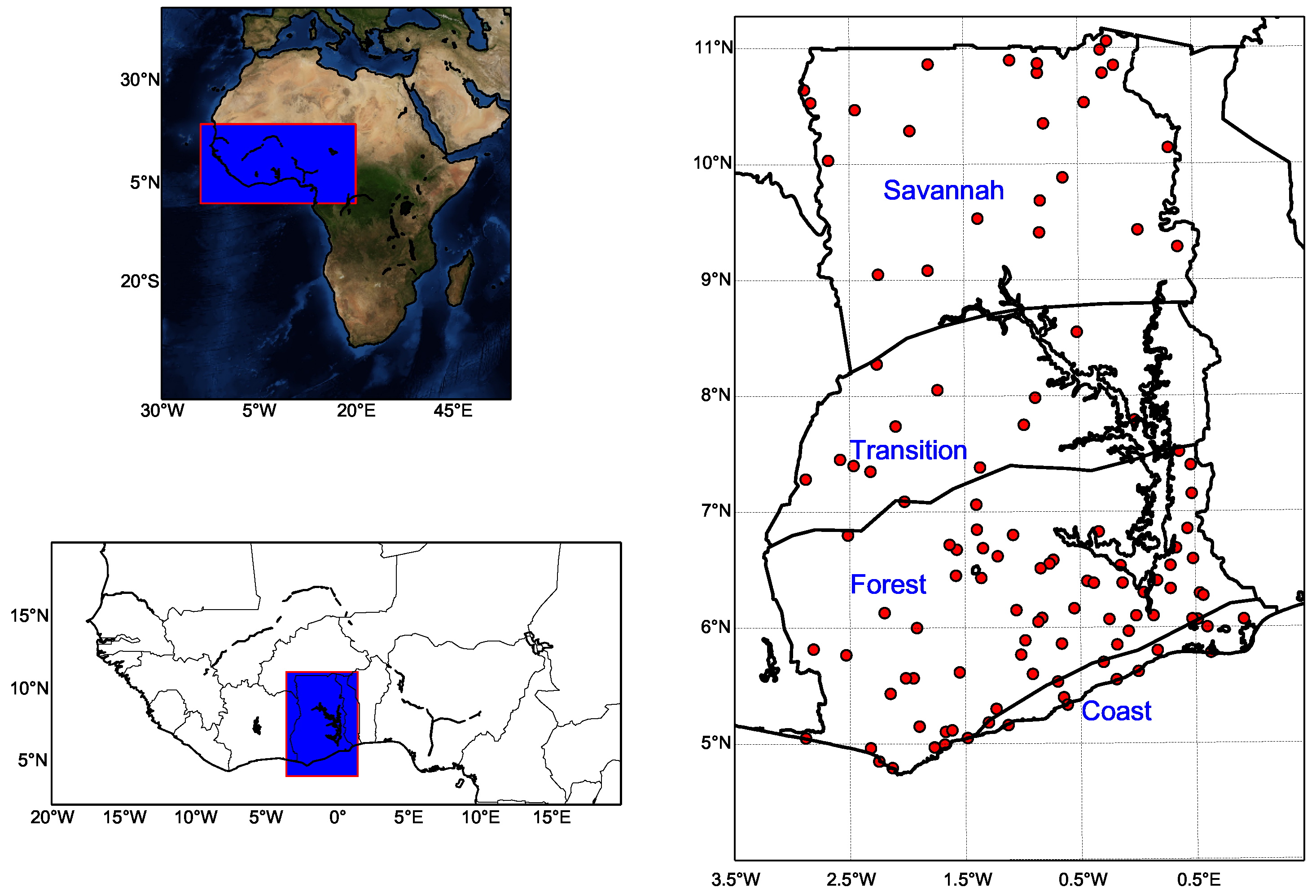
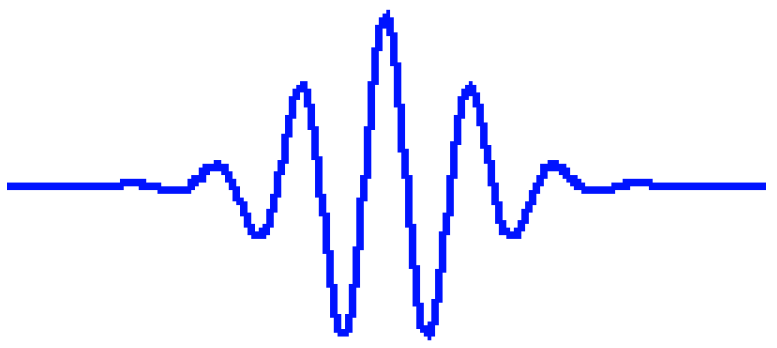
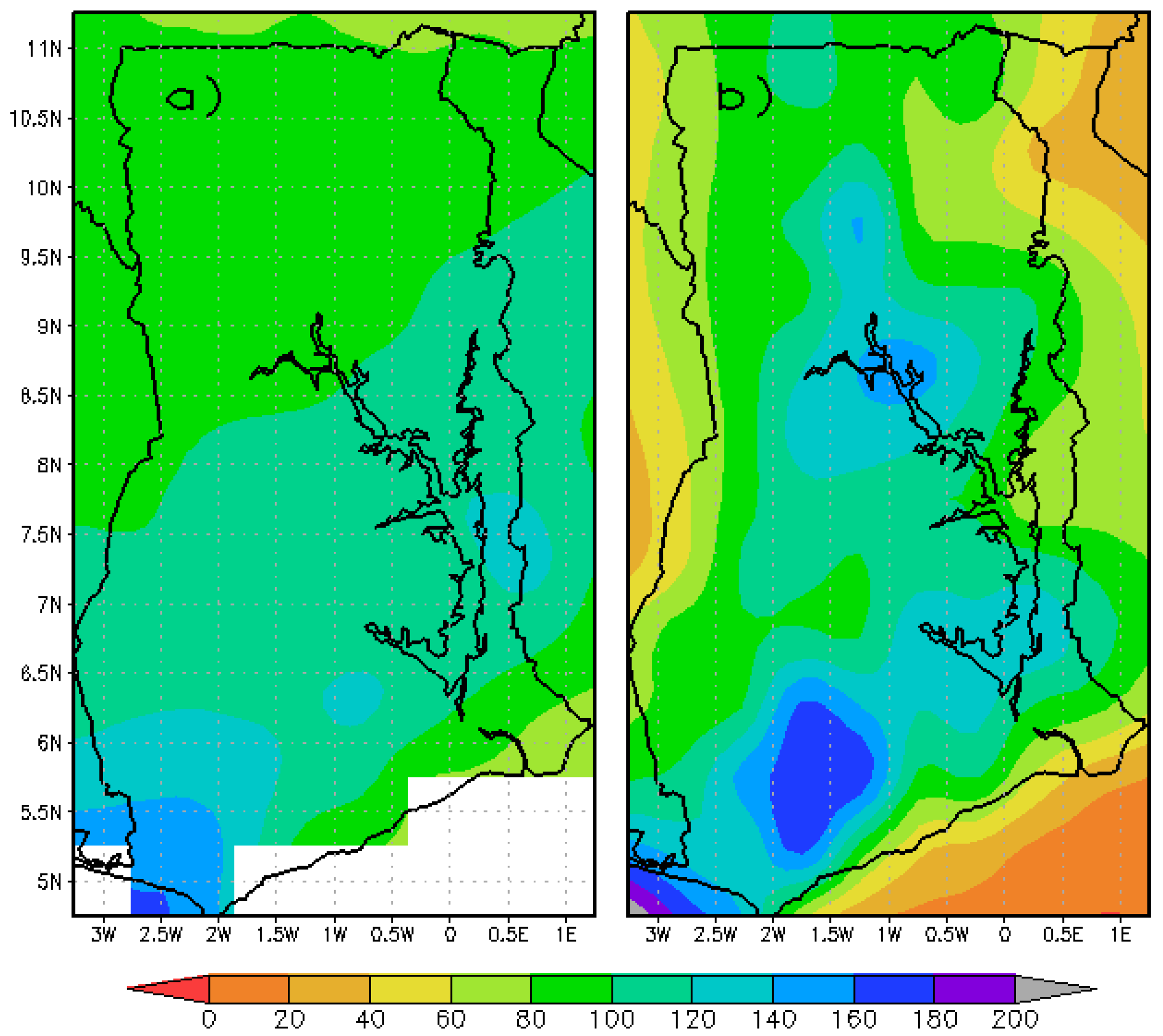
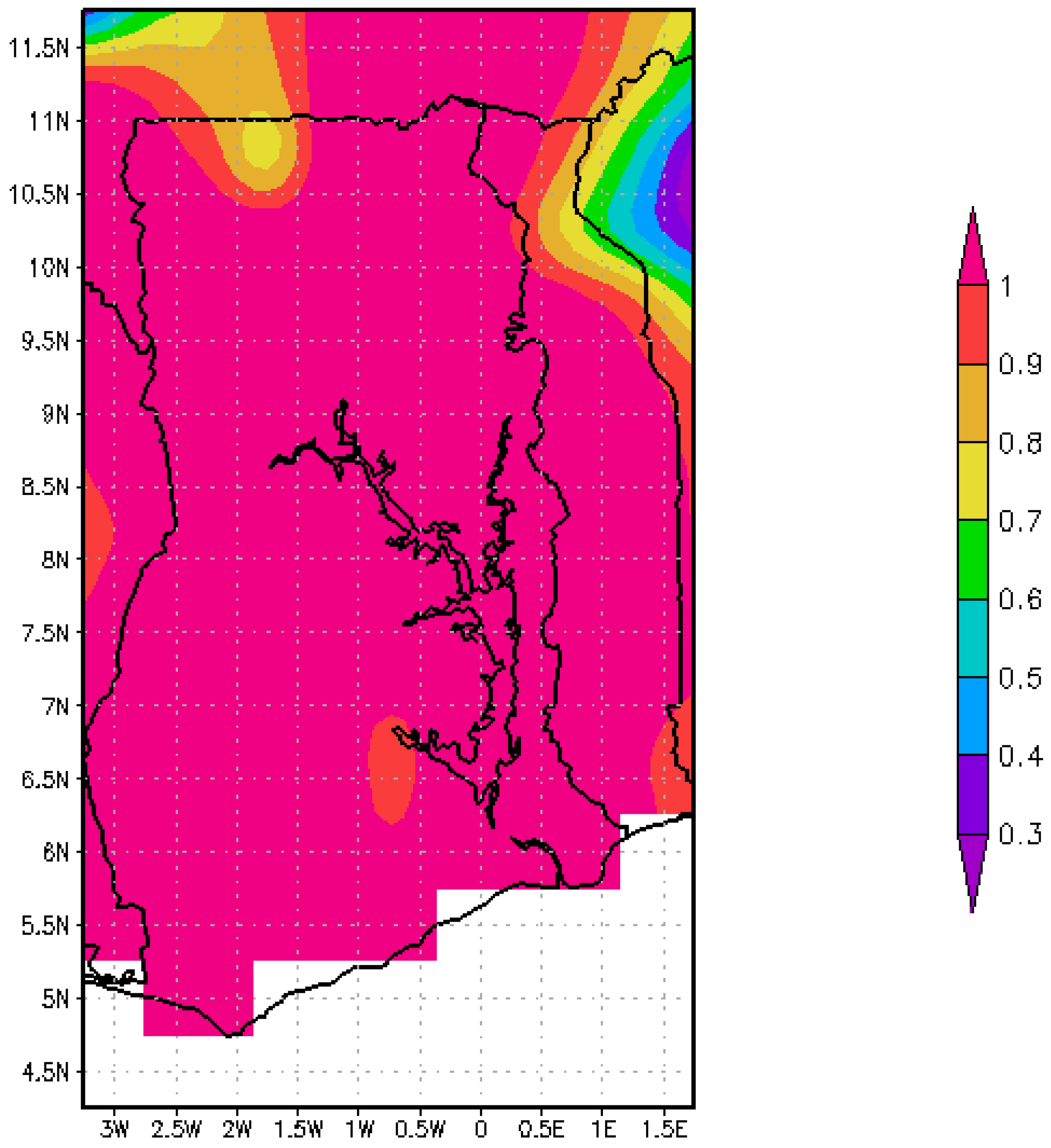

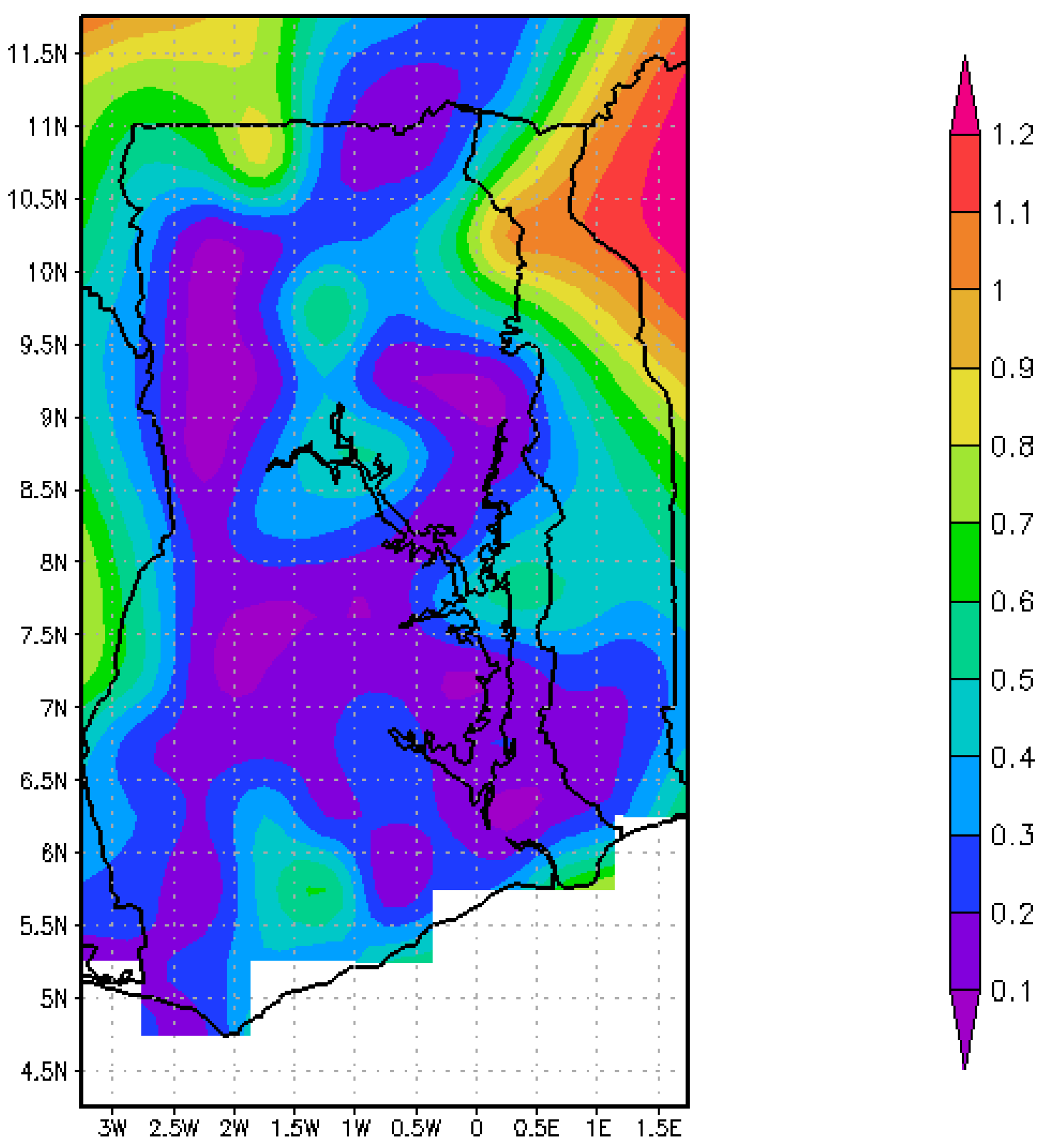
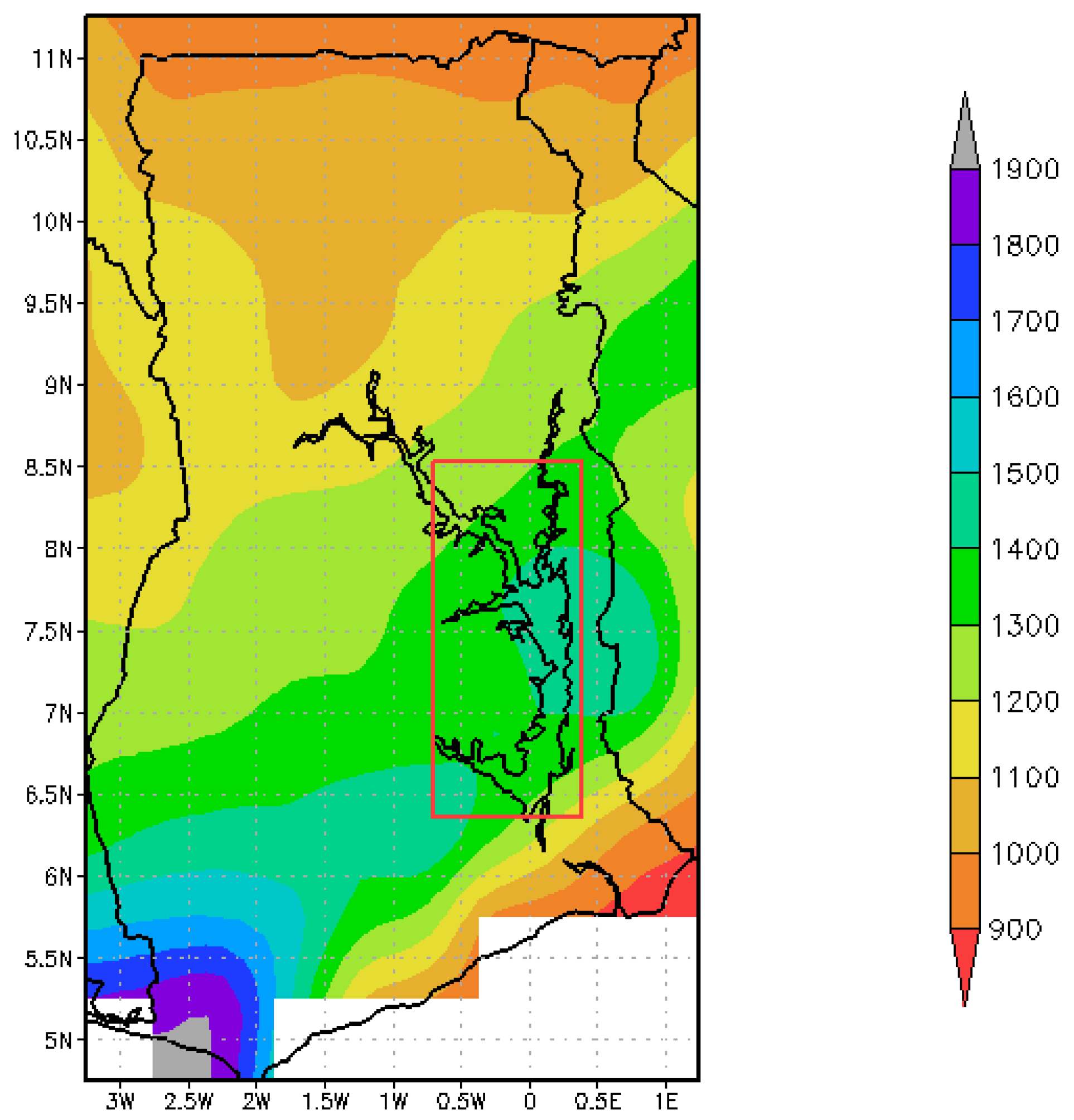
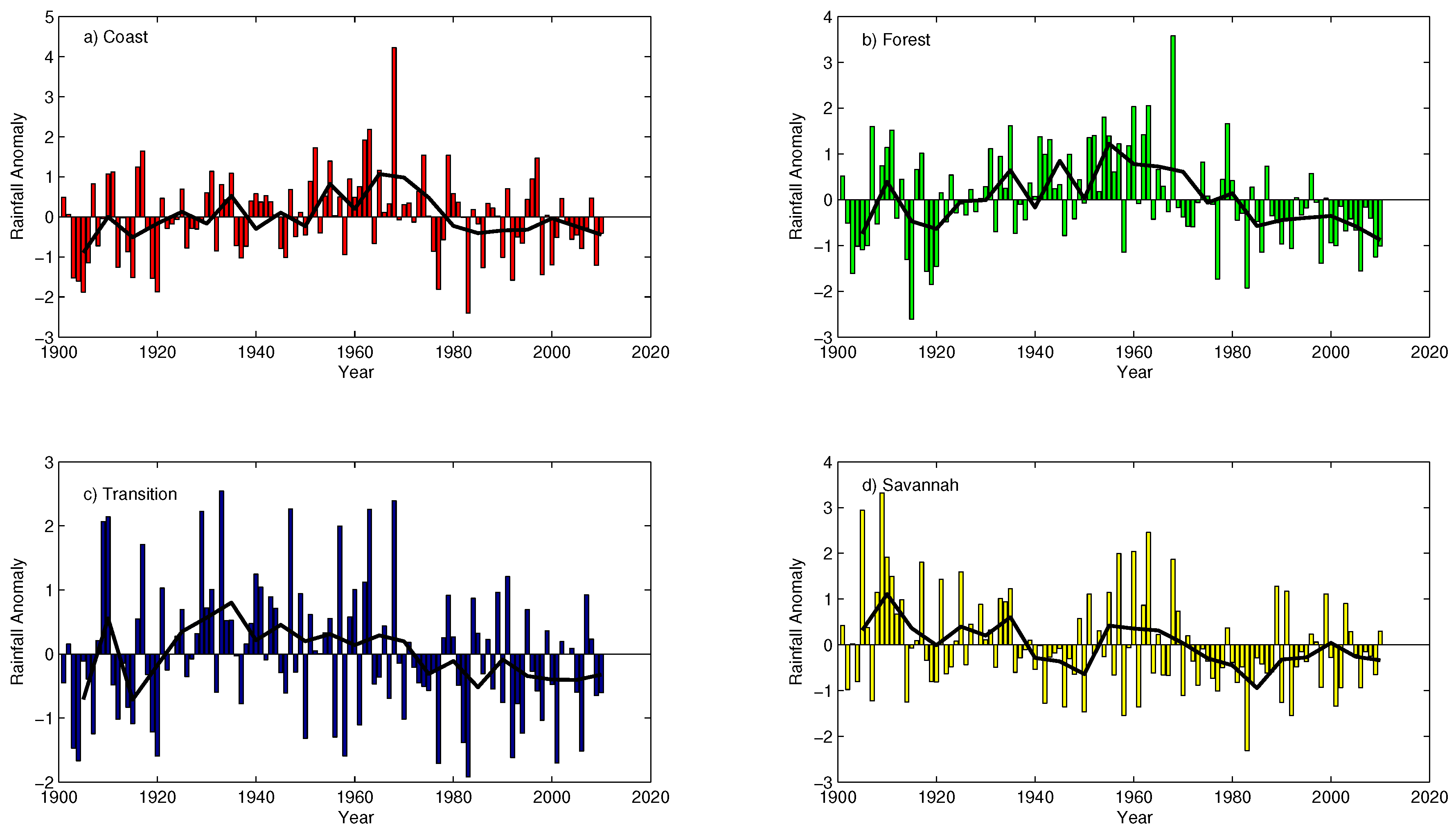
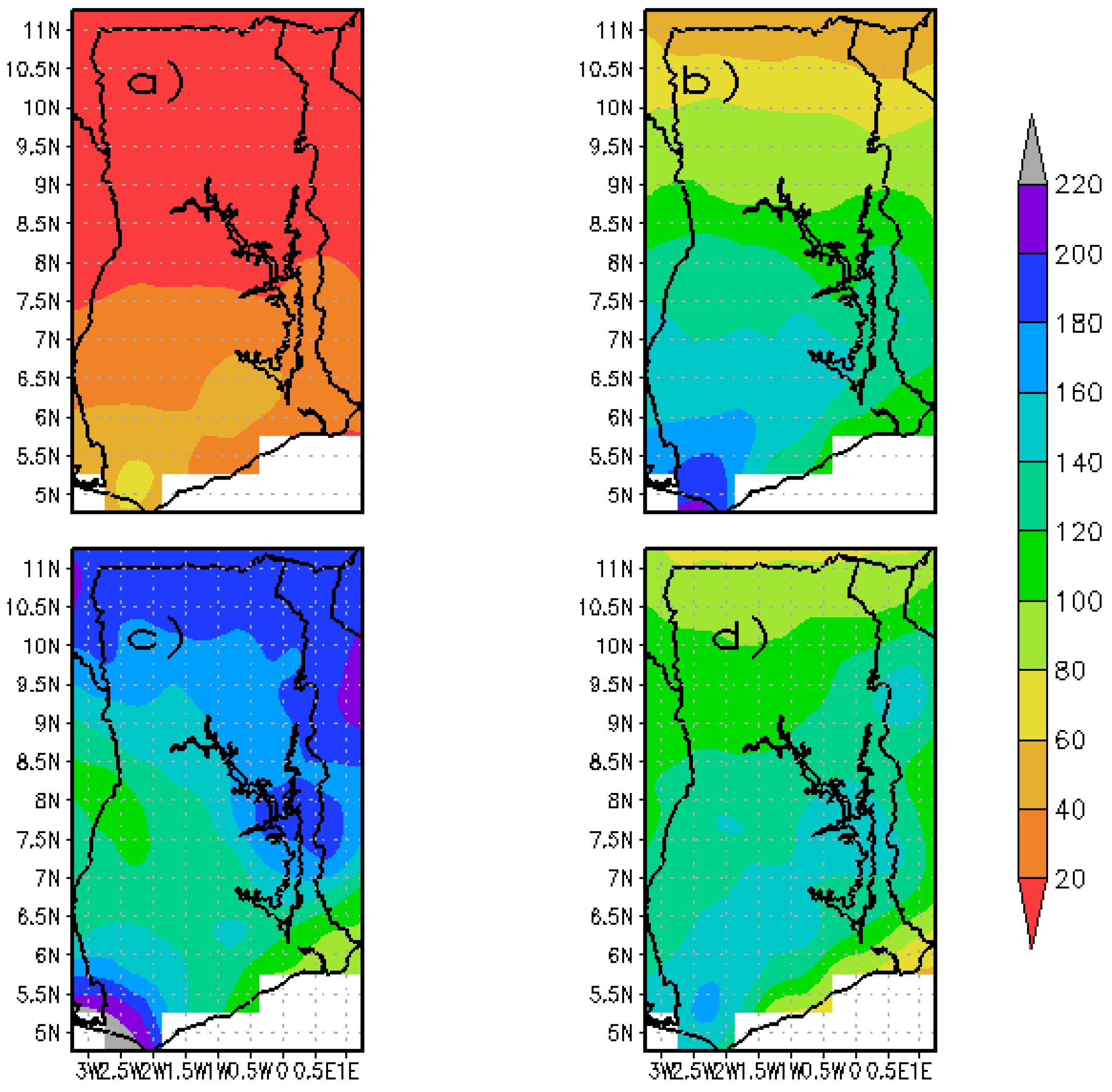
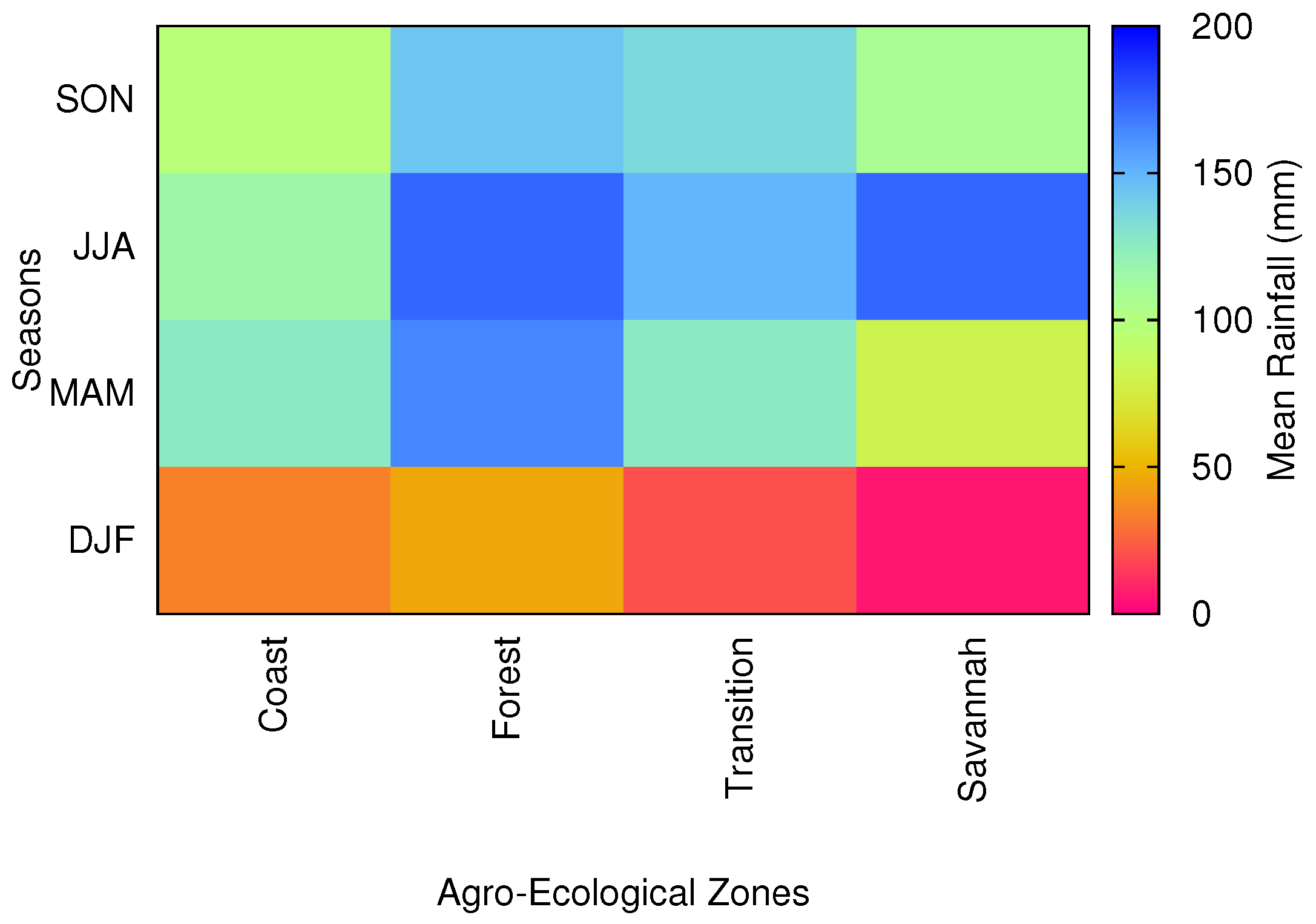


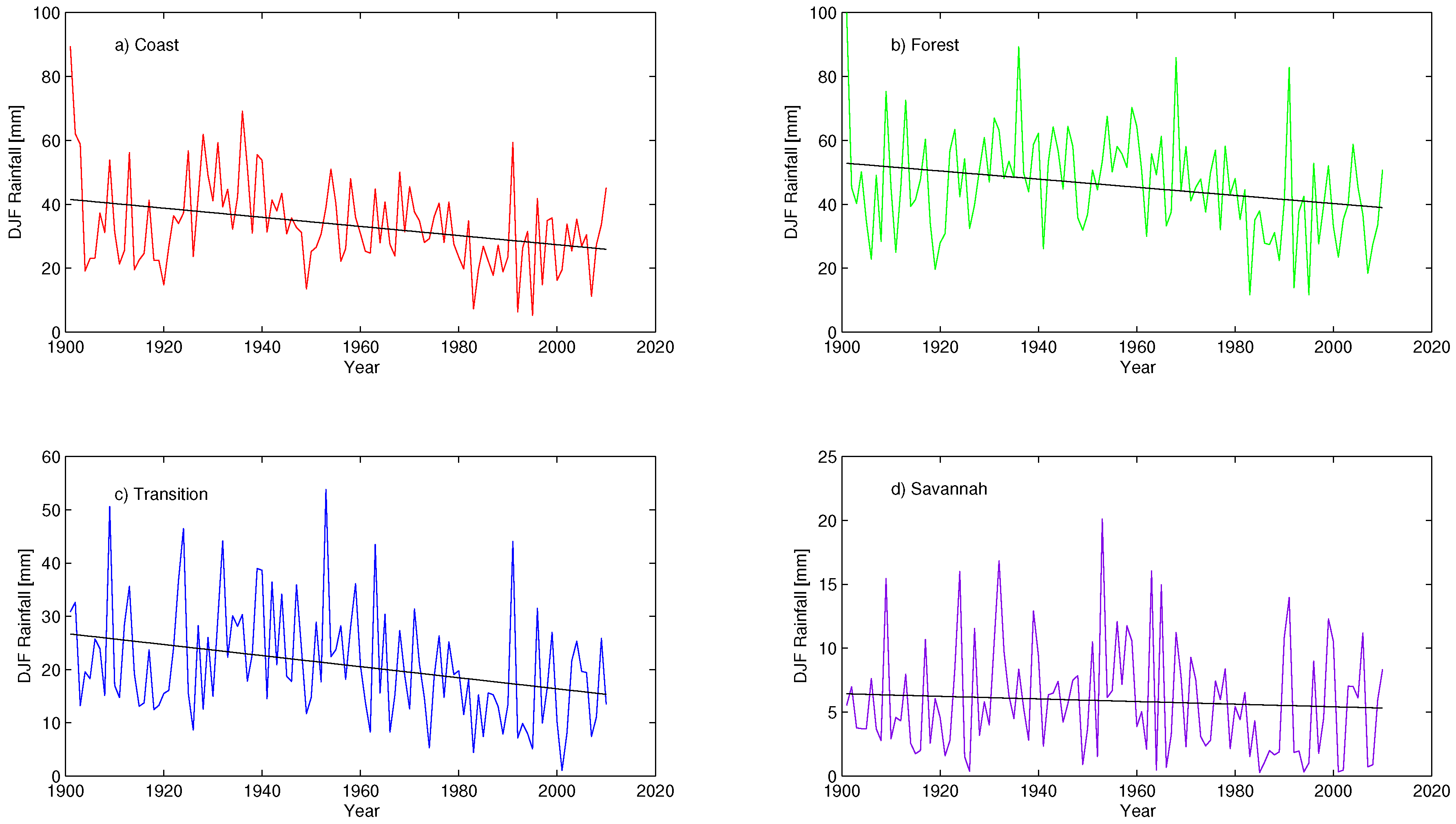


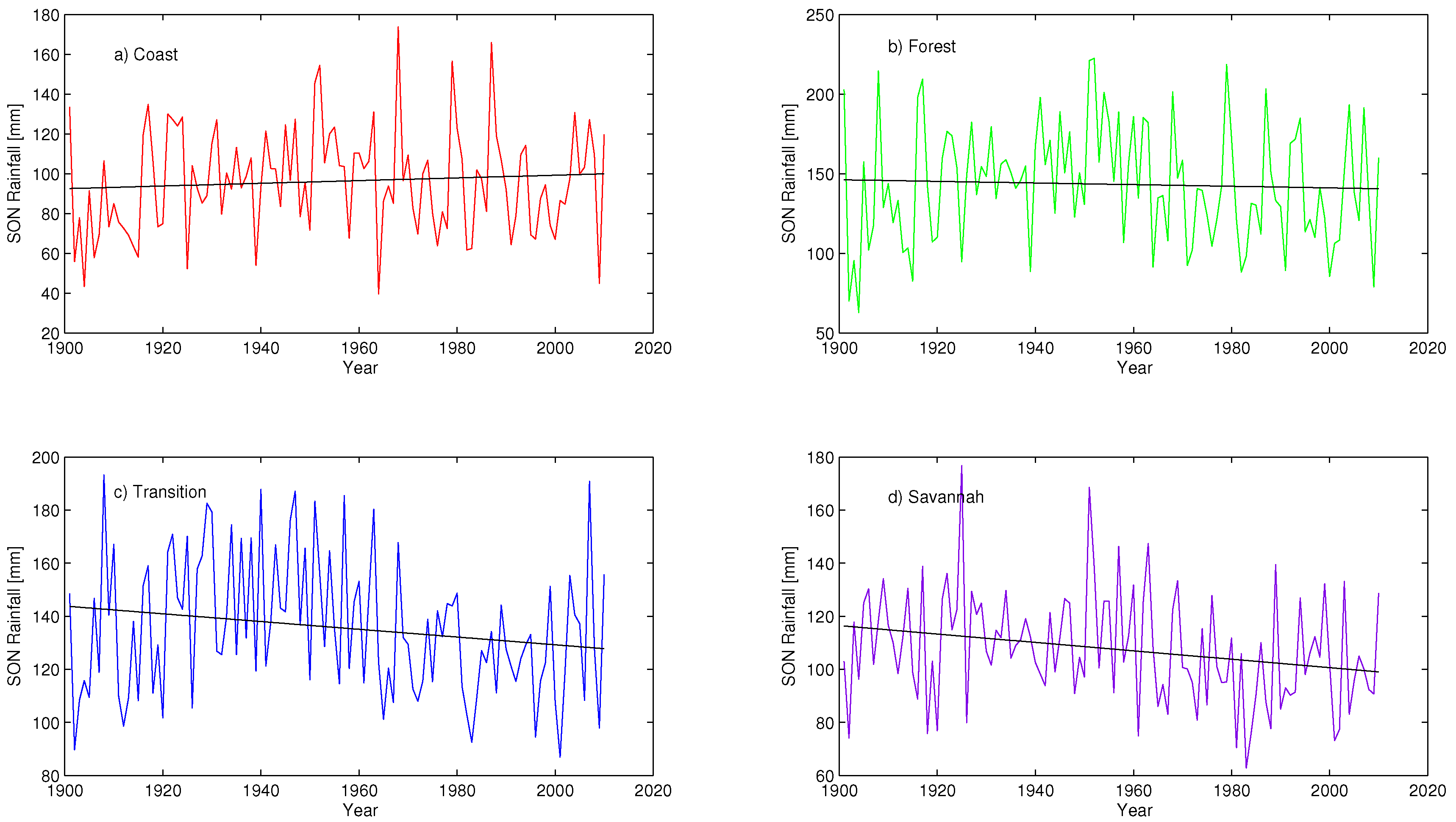
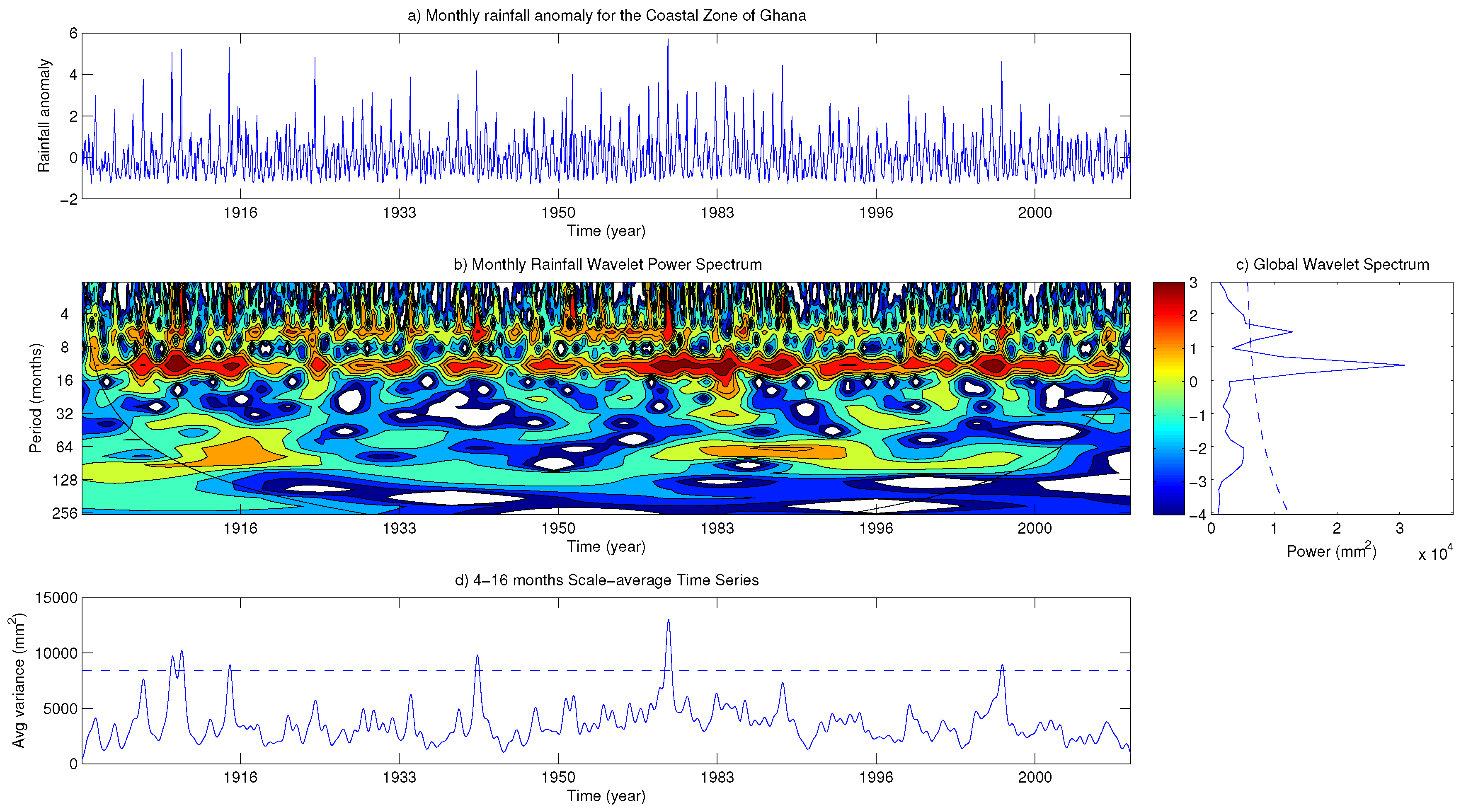
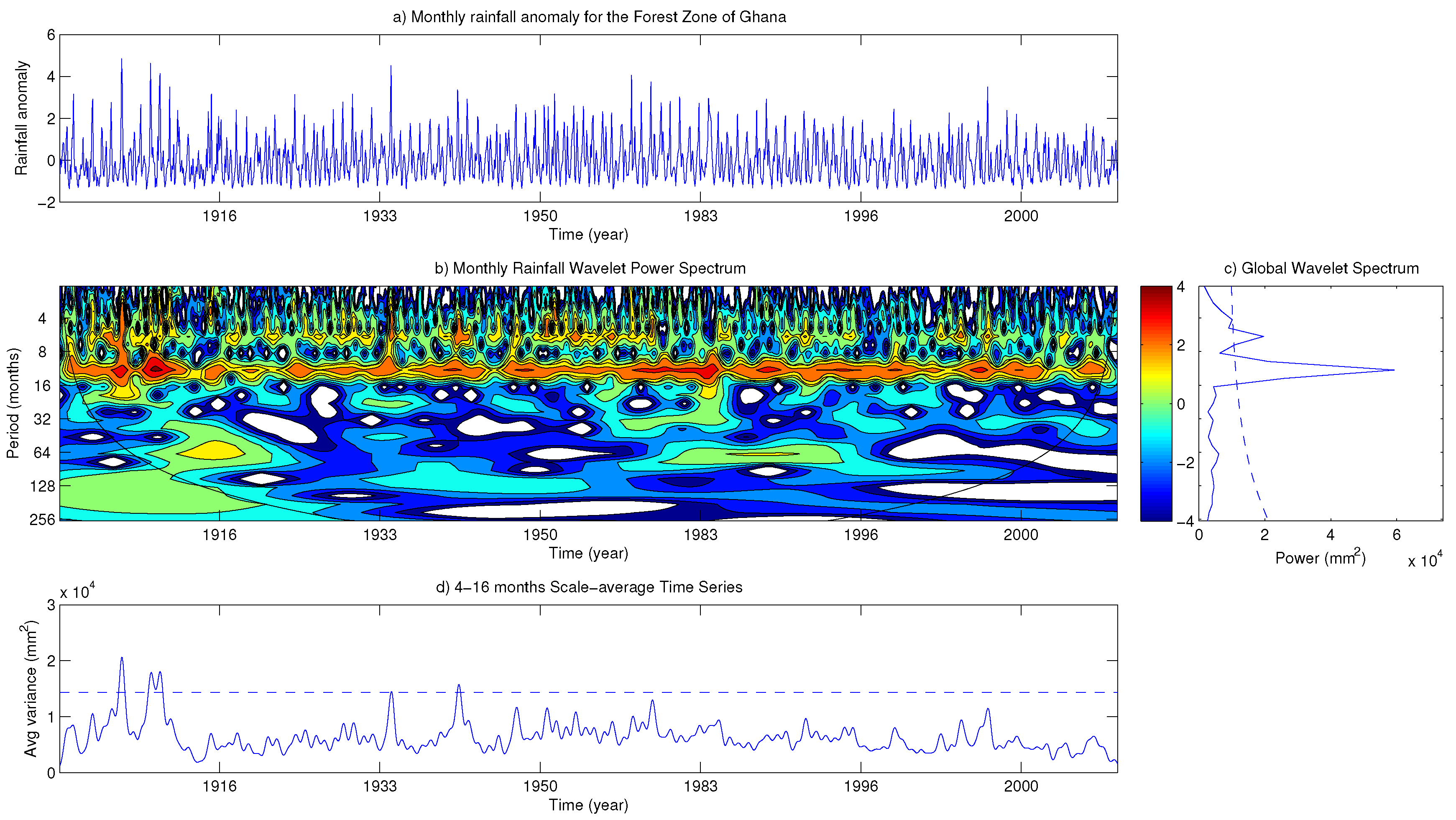
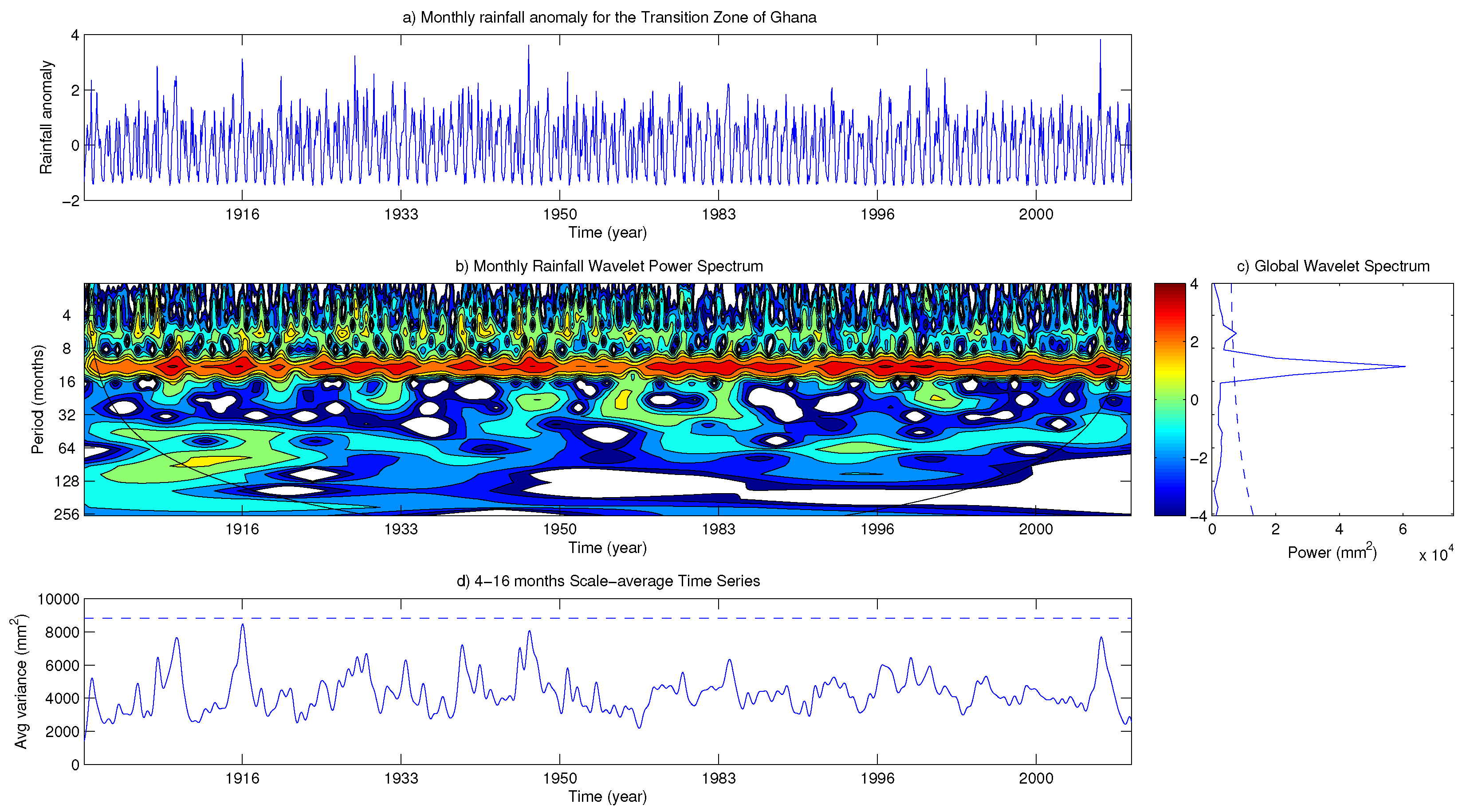
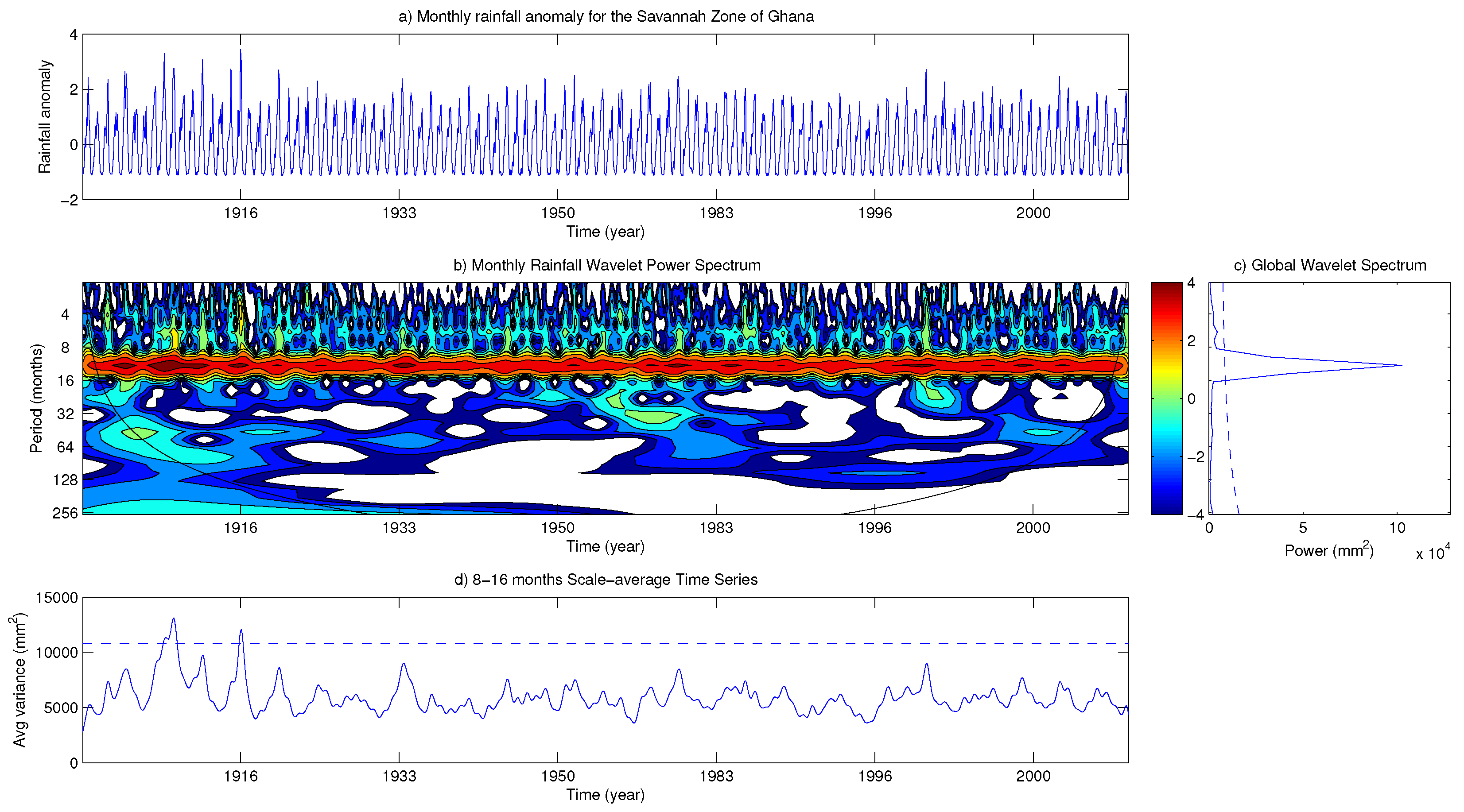
| Season | Rainfall Trend Rate | (mm per Year) | ||
|---|---|---|---|---|
| Coast | Forest | Transition | Savannah | |
| DJF | −0.1429 ** | −0.1273 ** | −0.1040 ** | −0.0102 |
| MAM | 0.0692 | −0.0793 | −0.2016 ** | −0.1181 ** |
| JJA | 0.0510 | −0.0242 | 0.2112 * | −0.0972 |
| SON | 0.0677 | −0.0512 | −0.1460 * | −0.1582 ** |
© 2017 by the authors. Licensee MDPI, Basel, Switzerland. This article is an open access article distributed under the terms and conditions of the Creative Commons Attribution (CC BY) license (http://creativecommons.org/licenses/by/4.0/).
Share and Cite
Baidu, M.; Amekudzi, L.K.; Aryee, J.N.A.; Annor, T. Assessment of Long-Term Spatio-Temporal Rainfall Variability over Ghana using Wavelet Analysis. Climate 2017, 5, 30. https://doi.org/10.3390/cli5020030
Baidu M, Amekudzi LK, Aryee JNA, Annor T. Assessment of Long-Term Spatio-Temporal Rainfall Variability over Ghana using Wavelet Analysis. Climate. 2017; 5(2):30. https://doi.org/10.3390/cli5020030
Chicago/Turabian StyleBaidu, Michael, Leonard K. Amekudzi, Jeffery N. A. Aryee, and Thompson Annor. 2017. "Assessment of Long-Term Spatio-Temporal Rainfall Variability over Ghana using Wavelet Analysis" Climate 5, no. 2: 30. https://doi.org/10.3390/cli5020030





